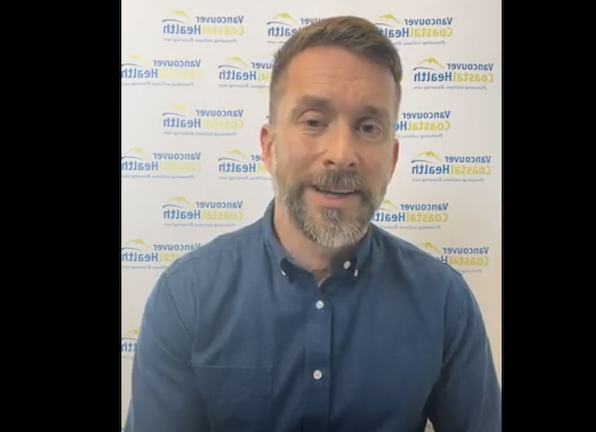The North Shore’s chief medical doctor offered glimpses of hope for some return to normalcy during a live question and answer session hosted online by Vancouver Coastal Health on Thursday.
Dr. Mark Lysyshyn answered questions ranging from whether COVID-19 can be transmitted on your shoes (unlikely) to how likely it is that doctors and government leaders may start opening up restrictions in the coming weeks (likely) during a .
For the health care system and elective surgeries that have been cancelled, one of the biggest limiting factors is availability of personal protective equipment like masks, needed for all health care workers dealing directly with patients, he said.
Orders restricting visitors at long-term care homes will likely remain, as long as there are virus outbreaks in the region, he said.
“We have to be very careful we don’t introduce the virus into these facilities,” he said. Lysyshyn acknowledged, however, that the lack of contact has a cost for both senior residents and their families. “We’re really trying to weigh the risks and benefits of having an order in place,” he said.
Overall in the Vancouver Coastal Health region, about 30 per cent of the cases (which stood at 747 on Wednesday) have been on the North Shore, while the largest number – about 60 per cent – have been in Vancouver, he said. Richmond has roughly 10 per cent of cases, while the rural areas, including the Sunshine Coast, Squamish and Sea-to-Sky corridor account for only about three per cent of cases combined.
��
Lysyshyn struck an optimistic note on the possibility of re-opening schools in some form soon and of small numbers of people being able to have more social contact.
So far, the science indicates not many children get COVID-19 and those who do get it tend to have mild cases, he said. “They don’t really seem to be involved in spreading the disease either,” he said. Schools and daycares, therefore, aren’t considered high-risk environments in the same way that environments where adults gather would be. “We do think it may be possible in the coming weeks to months to start providing more in-classroom education,” he said.
Addressing the wider issue of social get-togethers, Lysyshyn said it’s important that an order limiting gatherings of over 50 people remain in place. But when it comes to smaller gatherings of family and friends, people will have to decide what’s appropriate given their level of comfort and risk, he said. “People shouldn’t come together if they’re sick,” he said. “But they may be able to gather (if they are healthy) in smaller numbers, in certain ways. Outdoor environments are safer than indoor environments,” he said, adding transmission is more likely indoors.
Small numbers of people gathering in parks and beaches – where people respect social distancing - are probably ok, he said. “It is possible for people to get together. They just have to be responsible and safe about it.”
Lysyshyn addressed several questions about how the virus is most often transmitted.
At this time, doctors don’t believe that people without any symptoms play a big role in spreading the virus, he said. Most transmission is through inhalation of airborne droplets resulting from an infected person coughing or sneezing. Those droplets fall out of the air quite quickly he said, and can live on some hard surfaces for “quite a number of hours.”
That’s why hand washing and not touching your face is important, he said. “When we’re out in public, the main way we protect ourselves is through hand hygiene.”
Lysyshyn said while “we may not go back to normal society right away,” it will be important for people to have some degree of social interaction.
“A lot of the harm that’s come from the COVID outbreak has been about fear,” he said. “I do think fear and anxiety have been a big part of this outbreak.”
��




